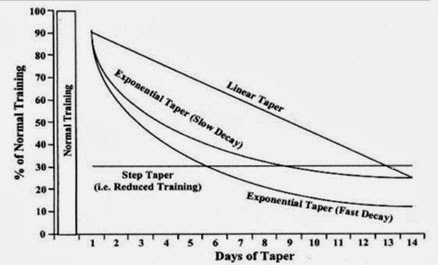It is universally agreed by sport and fitness professionals that overtraining is a necessary requirement in order to achieve the relevant physiological adaptations for peak performance. However, when prescribed in inappropriate quantities a deterioration in performance can be provoked. This article considers the impact of overtraining on the psychological and athletic state of an individual, highlighting the importance of various themes presented in my previous blogs.
Overtraining can be defined as a cycle of training whereby the athlete is exposed to excessive maximal capacity training loads. If this training cycle proceeds without adequate rest, a reduction in workload or in conjunction with psychological/physical stressors then overtraining syndrome (OTS) results and subsequently a deteriorated performance is seen.
At present there is no single test that can be utilized to diagnose overtraining, its recognition requires the identification of a number of stress markers which remain elevated despite a period of recovery. Stressors that may be observed include:
- Diminished skeletal muscle glycogen stores
- Aerobic efficiency deterioration
- Suppressed immune system
- Depression
- Distorted sleeping pattern
These parameters should be regularly screened for alteration by sport professionals, this will ensure that the short term fatigue related with overload is not confused with the chronic fatigue generated by overtraining.
Numerous studies have taken place to review the effects of overtraining on physiological and psychological functioning, one of which observed that mood state disturbances increase in a dose-response fashion to the training stimulus. These fail to return back to baseline levels even after a significant reduction in training load. It has also been reported that 80% of ‘stale’/overtrained athletes are clinically depressed, substantially affecting other aspects of an individual’s life and overall wellbeing. Alternative research has also shown that 60% of female and 64% of male elite long distance runners have experienced at least one bout of staleness within their running careers, whereas this fell to 30% in highly trained sub elite runners (Morgan, O Connor, Ellickson and Bradley 1988). It is also thought that once staleness is experienced subsequent episodes are more probable, thus emphasising the need for the observation of stress markers in athletic populations. Failure to identify key characteristics may lead to premature retirement from sport, increased injury risk or greater susceptibility to illness.
It has been argued that a high training volume coupled with insufficient rest will produce muscle, skeletal and/or joint trauma. Such trauma will result in the activation of circulating monocytes by injury related cytokines that produce systemic inflammation, this inflammatory response can trigger the symptoms of diseases such as stroke, heart attack and arthritis. The elevation of cytokines within the circulation also directs a response known as ‘sickness behaviour’, which by means of the central nervous system stimulates negative mood and behavioural changes. In addition, liver function is adjusted to support greater gluconeogenesis (the generation of glucose) alongside de novo synthesis of various proteins and it is this hypercatabolic state that results in muscle wastage. Theoretically meaning that the body’s primary focus is upon survival/recovery, as oppose to the adaptation that training aims to elicit. With regard to immune function, a decrease in glutamine concentration contributes to immunosuppression as it acts as a key fuel for immune system cells.
As a result of these biological responses it is common for overtrained athletes to present a deteriorated mood state, typically complaining of sleeping disorders, lack of motivation and ‘heavy legs’. An impaired anaerobic performance and lactic acid threshold has also been observed, causing a reduction in the time to exhaustion during high intensity endurance exercise.
For the prevention of this decline in performance it is essential that training is periodised and tailored to match the Profile of Mood States (stress levels) of the athlete, as well as tapering training prior to competition. These practices should be coupled with adequate carbohydrate ingestion to fuel and recover from physical activity, ensuring the maximum amount of energy is available for exercise. It is also vital the training is abstained from following periods of illness, high stress and extreme environmental conditions for the maintenance of motivation.
With professional and amateur sporting calendars now including events all year round it is fundamental that athletes of all abilities allow for adequate rest within their regimes. Research clearly documents profound affects to physical and psychological health if individuals fail to do so, these may ultimately lead to severe injury, depression or performance decline.
